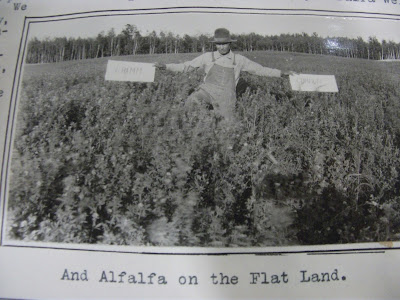This year marks the centennial of a paragon of the Wisconsin Idea, the UW’s Cooperative Extension, a partnership between Wisconsin counties, the U.S. Department of Agriculture and the University of Wisconsin, which provides education to people where they live. Cooperative Extension applies UW research to everyday contexts, helping people understand and solve the problems affecting them. This summer, when southern Wisconsin faced a severe drought, Cooperative Extension maintained a blog with posts on resources to help farmers cope with the extreme weather conditions.
During the Dust Bowl of the 1930s, Wisconsin farmers faced a devastating drought as well and Cooperative Extension also lent farmers a hand then. The Drought Relief Records, 1930-1938, just one Hollinger box in the Agriculture and Extension Education’s massive 300+ box collection, documents drought relief efforts. The documents are mainly surveys and reports, most of them from county agent Robert Amundson. County agents are Extension employees who provide education to farmers throughout the state.
One large survey that extension workers undertook was a study of the severity of the drought and its effects on crops and feed supplies. Based on the results, extension staff designated areas severely impacted by the drought, making farmers from those areas eligible for emergency livestock feed loans
Wisconsin Feed Survey Maps, 1934
The collection also contains Amundson’s report on soil conservation education in Outagamie County. With assistance from the UW Soils Department, Amundson and agents throughout Wisconsin educated farmers in areas with poor soil quality about drought resistant crops and methods to enrich the soil. Amundson held demonstrations on the benefits of growing alfalfa and using lime and phosphate as fertilizers, activities he documented in a photograph-rich report.
First page of Amundson’s report
Photograph from Amundson’s report
Section of a page from Amundson’s report
The principal of Cooperative Extension’s blog from last summer and the surveys and demonstrations from the 30s are largely the same: using UW research to help farmers get the most out of their farms in difficult times.
[Post Created by Rachel Thompson]




No comments:
Post a Comment